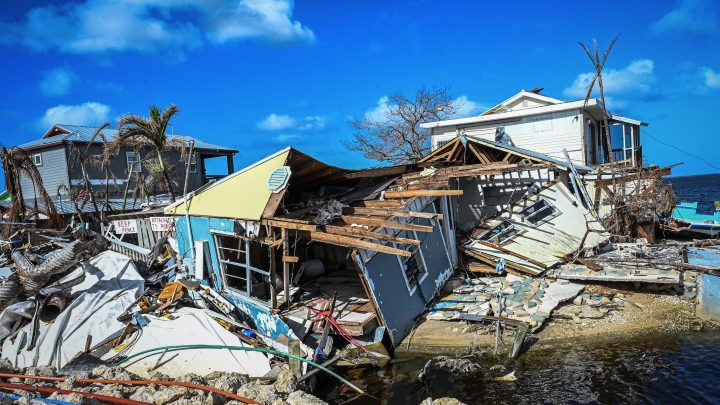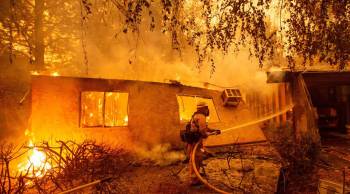
Why the CAT bond market is booming right now

One of the best bets that big investors could’ve made in 2023 offered returns of nearly 20%, according to reporting by Bloomberg.
They were wagers on the probability of natural disasters. They’re called catastrophe — or CAT — bonds, and they’re typically issued by insurance companies to provide extra capital in case a hurricane, earthquake or some other natural disaster ends up generating a lot of claims.
And as the risk of catastrophic weather events has been growing as climate change worsens, so has the CAT bond market.
CAT bonds first became a thing in the 1990’s, after Hurricane Andrew exposed just how expensive the aftermath of a natural disaster can be.
Insurance companies realized, “There simply wasn’t enough capacity in the U.S. insurance system alone to be able to manage the value of properties that were expanding at an ever-increasing rate in places like Florida or California,” said Robert Hartwig, a professor of risk management at the University of South Carolina.
Those places that were more at risk of hurricanes, fires and earthquakes could potentially drain an insurance company’s coffers if tons of claims came in all at once.
So, those companies started issuing CAT bonds. The investors who buy them are putting up capital that an insurer can tap into if a disaster is bad enough. Hartwig said the bond buyers are making a bet, “that there will not be an event large enough to trigger losses in the catastrophe bond in which they are invested.”
If a disaster does strike, “they will potentially lose the interest, the principal or both,” Hartwig said.
But if there’s no disaster, they get a pretty hefty return, because they ran the risk of losing everything. And that rate of return is why demand for CAT bonds is growing.
Meanwhile, insurers are increasing the supply of bonds for a couple of reasons, said Karen Clark, who runs a weather, climate and catastrophe modeling firm.
“One is of course climate change. Two, is just property values,” she said.
And, the cost of replacing those properties — the costs of labor and construction materials — are up. Finally, there are the places where people are choosing to live.
“We have more people moving into hazardous areas. So there are a lot of factors that are pushing the risk up,” Clark said.
So, she said, the outlook for investors in CAT bonds is pretty good, as long as they spread out their risk.
Maybe you want to buy some Northeast, some Florida, or maybe “severe convective storm” in the Midwest.
Because, even the best weather modeling gets the forecast wrong sometimes.
There’s a lot happening in the world. Through it all, Marketplace is here for you.
You rely on Marketplace to break down the world’s events and tell you how it affects you in a fact-based, approachable way. We rely on your financial support to keep making that possible.
Your donation today powers the independent journalism that you rely on. For just $5/month, you can help sustain Marketplace so we can keep reporting on the things that matter to you.

















